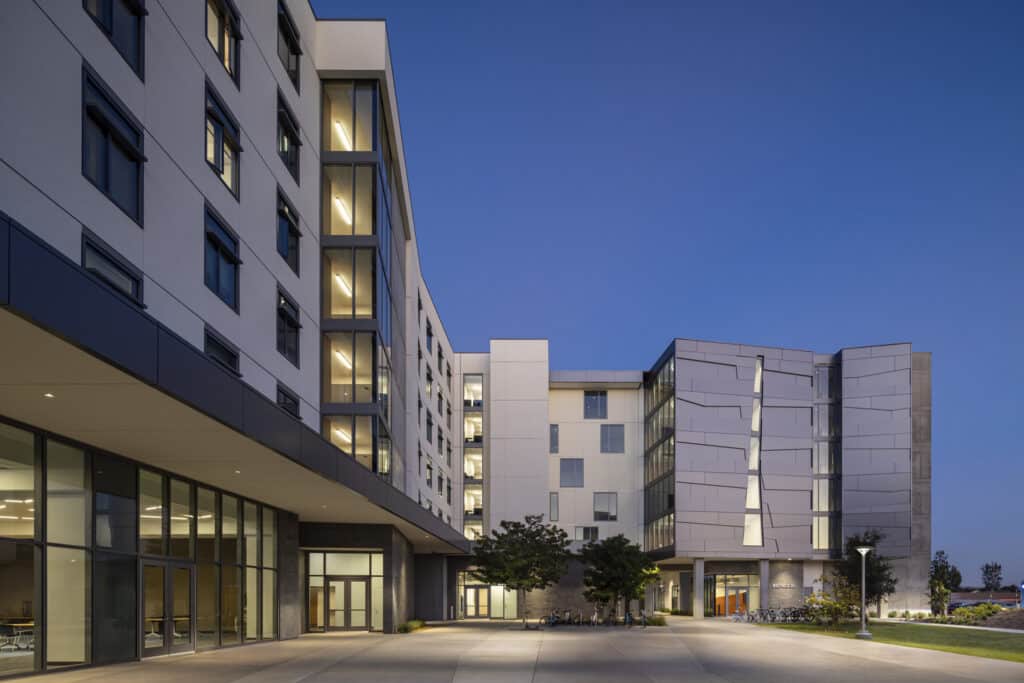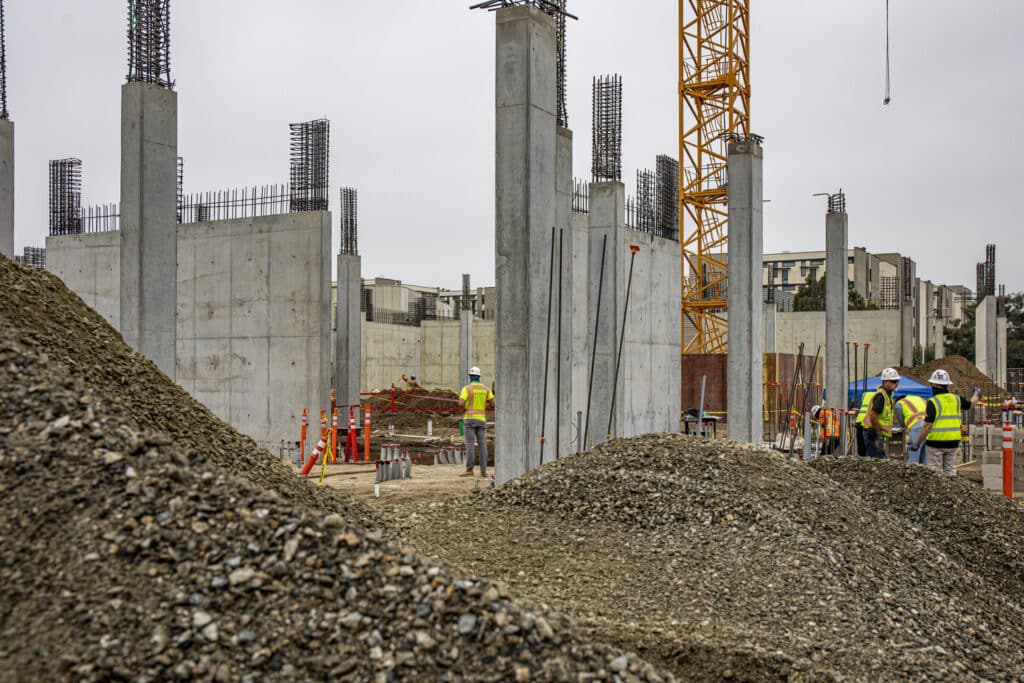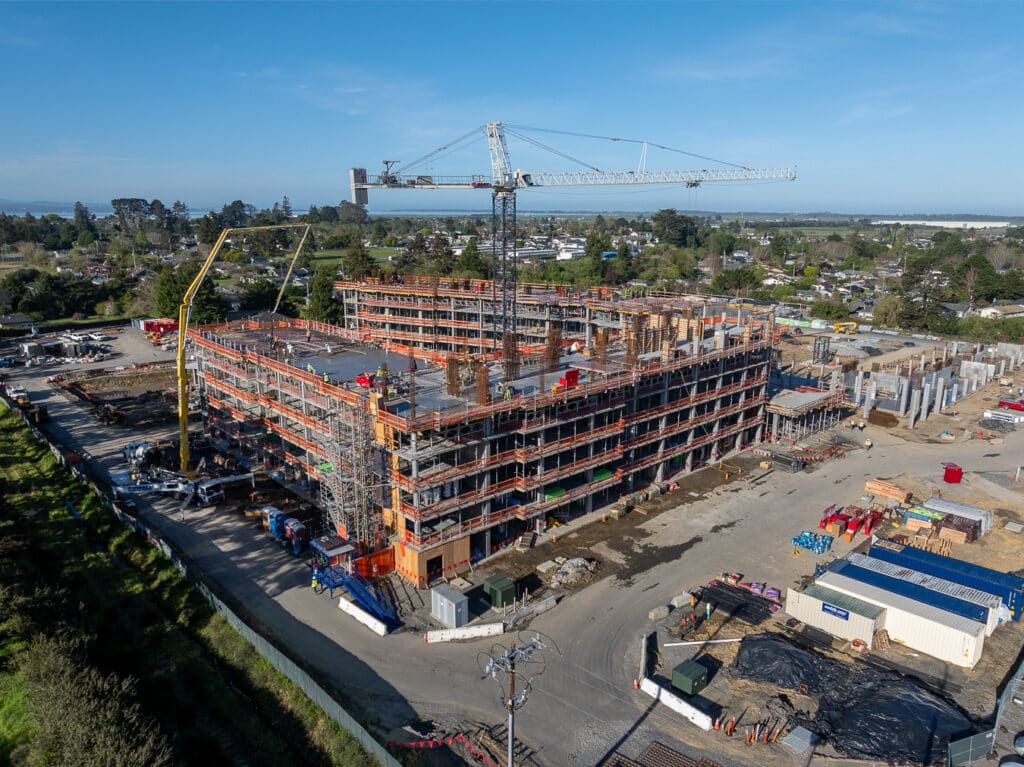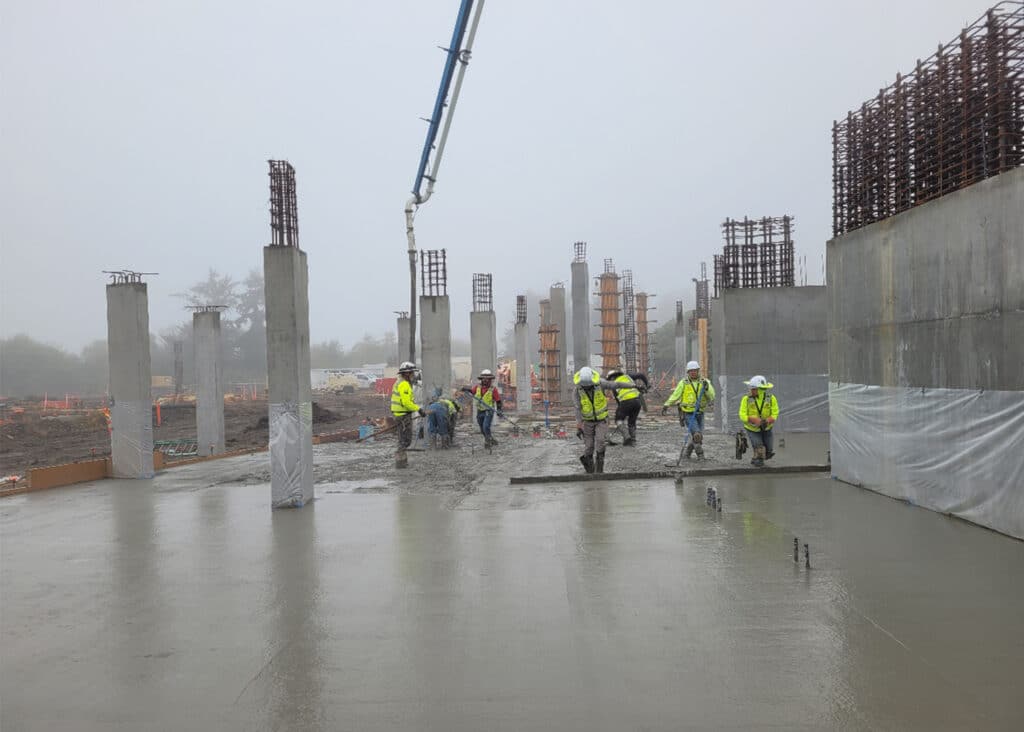
Across the United States, universities are facing the complex issue of the shortage of affordable housing for current and incoming students. While there has been an uptick in luxury housing being built on or near college campuses, according to a study from the Pew Research Center, undergraduate students are increasingly likely to be from families in poverty, making affordable and accessible housing a necessity.
Naturally, students themselves are also often income-challenged. In a study conducted by the National Multifamily Housing Council, 34% of undergraduates and 38% of graduate students earn less than $20,000 annually. The study also revealed that students value functional amenities over luxury accommodations.

Universities across California are investing more money into massive student housing complexes that offer students affordable, yet quality housing options. Accomplishing this goal begins with selecting the right material for the building’s structure.
“In the higher education market in California, we like to offer our clients several solutions. One of those is the option of a concrete structure over a wood frame,” said Sundt Vice President and Irvine Regional Manager Jim Householder. “When you list the pros and cons next to one another, the pros of constructing a concrete building outweigh a wood frame in most student housing scenarios.”
Sundt Project Director Chris Sullivan explained, “a wood building will last 20 to 30 years, at best. Plus, you can’t redo it, you can’t reuse it, and it can’t be repurposed. Figuring out the true cost of a building means incorporating the lifecycle analysis, and with that, concrete always wins.” A concrete building can be repurposed and reused, increasing the lifecycle up to 100 years.
Another perk is the additional space concrete allows inside the building. Jim explained that post-tensioned concrete design allows concrete to be used in higher and longer spans, creating larger spaces and greater floor to ceiling heights. This all aids in the engineering and design of the building and maximizes floor space—something crucial in a college dorm room.
In 2022, Sundt completed a self-perform concrete student housing expansion for CSU Fullerton. The complex houses 600 sophomore and junior students, offering suite-style living. Sundt’s self-perform concrete capability gave the team more control over quality and schedule, resulting in an efficient 15-day cycle duration per deck. Sundt achieved similar success at Cal Poly Pomona when constructing two residence halls and a dining commons on campus. The project’s two, 8-story, post-tensioned concrete towers, completed in 2020, house 980 students.
“Six years ago, I joined Sundt at the Cal Poly Pomona student housing project. Our self-perform concrete team had just completed the second level deck, and I was impressed with how effectively the Sundt concrete and project management teams integrated to perform the work. The jobsite was impeccably clean, well-organized and safe. That was all due to the proud Sundt craft workers who set the tone for the job.” -Jim Householder, Irvine Regional Manager

Although wood frame structures typically go up faster, the longevity of the structure is often called into question. Using wood also means higher property insurance costs, which can be astronomical in California. “Wood frame insurance rates are generally four to five times higher than concrete,” said Brian Johnson, Director of Risk and Insurance at Sundt.
Concrete buildings generally have lower property insurance costs compared to wood frame construction because of the associated risk. “Wood is obviously prone to environmental risks such as wind, fire and earthquakes. There is also more maintenance associated with a wood frame building, which increases the life cycle cost,” said Brian.
17,000 Cubic Yards of Concrete
Currently, Sundt is self-performing concrete on a new student housing structure in Arcata, California for California State Polytechnic University, Humboldt. Once complete in 2025, the 964-bed complex will increase the university’s student housing by nearly 50 percent.
The university had originally planned for a wood frame project, but “using Lean construction techniques, the Sundt team employed best value selection criteria and found that concrete added significant value in the region,” said Sundt Project Director Dylan Rogers. The client wanted a durable project that would last 50-plus years. Even though concrete comes with a larger up-front cost, it was better suited in meeting client goals and came with lower insurance risk.

Because the project site is in a remote location with few housing options, another benefit to self-perform concrete came in reducing the number of crew members needed to perform the work. “If this were a wood-framed building, you might need a crew of up to 100 people,” explained Dylan. “Sundt’s concrete crew on this site is around 35 people, and they’re integrated into our company at large. This results in a higher quality product and a safer jobsite.”
Fire marshal inspections are also proceeding smoothly on this project thanks to the building’s Type 1 construction that utilizes non-combustible materials, the safest building type. This not only ensures the protection of its residents—some of society’s bright future leaders—but also reduces long-term maintenance costs and enhances overall community safety.
Humboldt is also known for its wet weather. To date, the project has experienced 67 inches of rain since it began in April 2023. The team has pumped 13.5 million gallons of water through the local treatment plant for discharge. Throughout all of this, the concrete work has continued, keeping the schedule on track, which is another benefit to selecting the material.
As universities address the student housing shortage in California, concrete structures fit the bill for schedule, quality and longevity. Sundt continues to partner with universities and colleges to evaluate and identify long-term solutions that meet the needs of students, allowing them to focus on what matters most: pursuing their education.
Stay up to date with Sundt’s student housing projects.